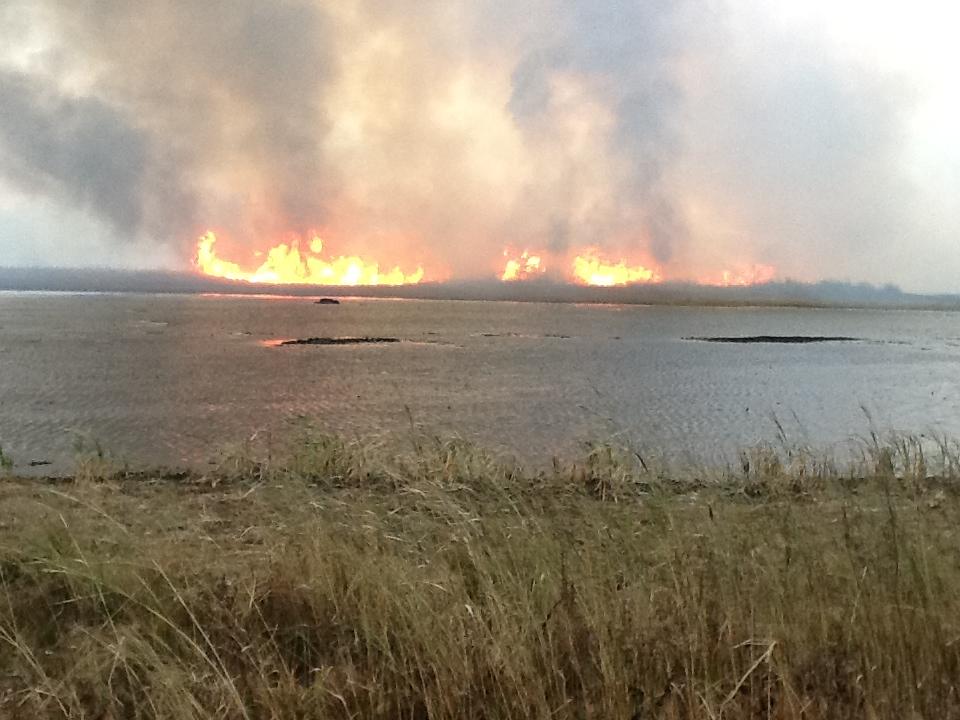
The pay of federal wildland firefighters and hazardous fuels treatments were two of the issues discussed Wednesday at a hearing before the Senate Appropriations Subcommittee on Interior, Environment, and Related Agencies. The only witness was Vicki Christiansen, Chief of the U.S. Forest Service. The hearing was titled, Rethinking Resiliency: Budgeting for the Future of Forest Management.
The fact that it was scheduled at all seemed unusual, since a similar hearing before the same committee was held just five weeks ago on April 15 with Chief Christiansen testifying. The video of the earlier hearing is still available at the link above, but the hearing is not listed in the Committee’s list of “recent hearings.”
The video of today’s hearing is available at Grassroots Wildland Firefighters and at the Committee’s website.
Senator Dianne Feinstein said her main concern is the “salary situation.” She said the California Department of Forestry and Fire Suppression pays their firefighters $70,000 and the “U.S. Forest Service pays $38,000.” She had a strong point but her information about the FS salary is misleading. Most FS firefighters start as a seasonal employee at the GS-3 level. If they worked year round, which most of them do not, they would earn $28,078 a year at $13.45 an hour. After working for five to ten years they might be able to obtain a permanent full time appointment. If they reached the GS-6 level, they could earn $39,311 a year as a trained, experienced, highly skilled mid-level firefighter — an employee highly valued by other organizations anxious to hire them at double the salary.

Senator Feinstein said the differential in pay between CAL FIRE and the FS “…is the problem. And the loss in fire is just tremendous. I think that we have to move some way in a bill to make that change.”
“State, local, and private entities can range from $70,000 to $88,000 a year,” Chief Christiansen replied. “And their benefits are better. We have folks that are absolutely committed to the mission of the Forest Service, but at that wage, that gap in the wage, they’re going on to work for other entities. So we really appreciate working with you to bridge this gap and to discuss. We need more of a year-round workforce as well.”
“Well thank you Chief,” said Senator Feinstein. “Thank you very much for that because I’ve been around a long time, was a mayor for nine years of [San Francisco]. And I’ve never seen a pay differential this stark as the difference between federal firefighter pay and state firefighter pay. So the reason I’m here, is to say we need to move and do something about it. Let me ask another question. Do you have the mobility, Chief, to make the necessary moves to prevent this inequity from showing in actual firefighting?”

“Thank you,” Said the Chief. “We certainly can bring a strong voice to this problem, but we have to work across the Federal government with the Office of Personnel Management and of course, other agencies with federal wildland firefighters, the Department of the Interior being the largest. [Agriculture] Secretary Vilsack has made a commitment to bring leadership to this. And we really look forward to working with you here in Congress to address this issue.”
Senator Feinstein said she hoped the committee would work with her and others and “try to solve it.”
The Chief said that during the pandemic the FS continued hazardous fuels work, “…but we know it’s not enough. We need a paradigm shift under the President’s jobs plan. President Biden is calling on Congress to significantly invest in protection from extreme wildfire. After confronting record wildfires last year, we expect another long and arduous fire year in ’21. We are prepared, but we remain deeply concerned about the welfare and the pay of our thousands of firefighters. We’re grateful for your help in finding solutions that address pay equity, fatigue, and the mental wellbeing of our firefighters. Just this Monday, a Forest Service firefighter was seriously injured in New Mexico. He is a smoke jumper from Montana, and this demonstrates the seriousness of this business. Our thoughts and prayers are with him and his family. As I know yours are as well. You know, our infrastructure needs are pressing as are the economic needs of Americans. When we improve the infrastructure of the National Forests by upgrading roads, trails, and recreation sites. It spurs job growth and boosts economies. Thanks to the Great American Outdoor Act, we expect to create an additional 4,400 jobs and contribute an estimated $420 million to the GDP annually.
Senator Jeff Merkley, Chair of the Subcommittee, brought up an issue that again illustrates how the land management agencies can make it difficult for Congress to appropriate badly needed funds.
Senator Merkley asked about a report required by law to have been submitted by March 27 to provide Congress an estimate of the federal investment required to treat and restore federal and non-federal acres classified as high risk for wildfire. Chief Christiansen blamed the delay on the Department of the Interior where it is “in its final clearance”. Senator Merkley emphasized that the subcommittee needs the data “to advance far more funds for forest treatments” and asked the Chief to be sure it is submitted by the end of the month.
The Senator mentioned there is a significant backlog of fuel reduction projects in Oregon and New Mexico. He asked the Chief, “What does it take to get these projects that have already cleared the environmental controls, underway. Is it a single limitation? Is it just money or is it anything else?”
After an extended answer from the Chief, Senator Merkley interrupted to say, “I’m going to have you shorten it a little bit there. I think your answer was essentially, ‘Yes, it’s funds’ “.
Chief Christiansen said, in part, “Absolutely”.









